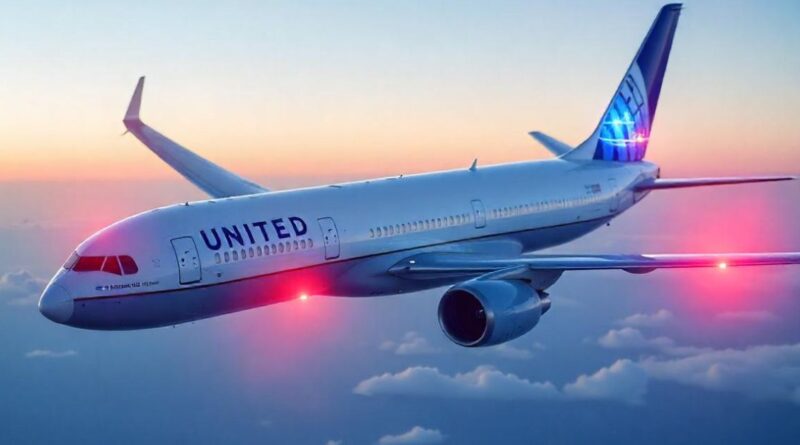United Airlines Flight UA770 Emergency Diversion: A Detailed Breakdown of the Incident and Its Aftermath
On a seemingly routine day, United Airlines Flight UA770 took off with passengers expecting a smooth journey to their destination. However, what unfolded mid-flight shocked not just those onboard but also the global aviation community. The United Airlines Flight UA770 emergency diversion serves as a chilling reminder of how quickly conditions in the air can change, and how critical emergency protocols are to safeguarding lives.
In this article, we’ll cover:
- What happened during the flight
- The cause of the emergency diversion
- How the crew responded
- Passenger experiences
- Official response from United Airlines
- The role of aviation safety systems
- What travelers can learn from the incident
A Flight Turns Alarming: What Happened Aboard UA770?
United Airlines Flight UA770 was scheduled for a regular domestic route—departing from Denver International Airport (DEN) and heading to Miami International Airport (MIA). The aircraft involved was a Boeing 737, a model widely regarded for its reliability. But halfway through the journey, the situation took a dramatic turn.
Passengers onboard reported a sudden drop in cabin pressure, followed by audible alarm signals and the automatic deployment of oxygen masks. According to multiple accounts, there was noticeable turbulence, and the temperature in the cabin shifted rapidly—classic indicators of a pressurization issue.
Within moments, the flight crew notified the passengers of an emergency. The captain declared an emergency situation and began executing a rapid descent to reach a safer altitude with adequate air pressure.
The Cause: What Triggered the Emergency Diversion?
Although a full investigation by aviation authorities is still underway, preliminary insights suggest that a malfunction in the aircraft’s pressurization system was likely the cause of the emergency.
Commercial airliners typically fly at altitudes of 30,000 to 40,000 feet, where cabin pressurization is essential for passengers to breathe comfortably. When that system fails or is compromised, oxygen levels can plummet, making it unsafe to continue flying at high altitudes.
The quick thinking by the flight crew ensured a safe descent to around 10,000 feet—where normal oxygen levels can sustain passengers until an emergency landing can be made.
Emergency Diversion and Safe Landing
Once the emergency descent was underway, the captain made the decision to divert the flight to the nearest suitable airport. Flight UA770 was successfully rerouted to Dallas/Fort Worth International Airport (DFW), where emergency responders were already standing by.
The aircraft landed safely, and no serious injuries were reported, though a few passengers received medical attention for symptoms related to mild hypoxia and anxiety.
United Airlines later confirmed the diversion, citing “a pressurization issue mid-flight that required an emergency landing.” The airline emphasized that safety remained its top priority and praised the crew for their professional handling of the situation.
How Did the Crew Respond?
The flight crew’s response was swift and exemplary. As soon as cabin pressure dropped, the pilots initiated emergency protocols:
- Oxygen masks automatically deployed.
- A rapid descent to 10,000 feet was executed.
- Air traffic control was notified for priority landing.
- Cabin crew guided passengers through the use of oxygen masks and reassured them.
Passengers described the experience as “terrifying but orderly.” According to several reports, the cabin crew maintained calm and discipline, helping passengers use their oxygen masks properly and checking on them throughout the descent.
What Passengers Experienced
For many passengers, the UA770 emergency diversion was a traumatic event. Some reported a loud noise before the alarms began. The sudden drop caused items to shift, and many felt pressure changes in their ears and chest.
Social media quickly filled with firsthand accounts and photos of oxygen masks dangling from overhead compartments. Some passengers praised the transparency and quick updates from the cockpit and crew, which helped prevent panic.
A few passengers shared that flight attendants checked for children, elderly, and individuals who may need extra assistance, showcasing the importance of human empathy during emergencies.
United Airlines’ Official Response
United Airlines issued a formal statement soon after the safe landing. The airline acknowledged the emergency and thanked both the flight crew and emergency responders for their timely actions. It confirmed that:
- All passengers were safe
- An investigation was underway
- Passengers would be rebooked and taken care of
They also offered travel vouchers and accommodations to those affected by the delay.
This response aligns with United’s broader policy of passenger-first accountability, and the company has reassured the public that all safety systems were reviewed post-incident.
The Role of Aviation Safety Systems
Incidents like the Flight UA770 emergency diversion underscore the importance of backup safety systems in modern aviation:
- Oxygen masks deploy automatically when cabin pressure drops.
- Altitude monitoring systems notify pilots of abnormalities.
- Pilots receive extensive emergency procedure training.
- Emergency descent protocols are part of standard flight plans.
Thanks to these redundancies, flights that experience issues can still land safely with no loss of life.
What Travelers Can Learn From UA770
While flying remains one of the safest modes of travel, the UA770 incident reminds us that being prepared—even as a passenger—can make a difference. Here are a few takeaways:
- Always pay attention to safety briefings before takeoff.
- Know where your oxygen mask and life vest are located.
- Don’t ignore pressure changes or ear pain—they could indicate trouble.
- Stay calm and listen to the crew’s instructions.
Knowing what to do in the event of a cabin pressure drop or emergency descent can reduce panic and improve your chances of staying safe.
Final Thoughts: A Close Call with a Positive Ending
The United Airlines Flight UA770 emergency diversion was a stark reminder that no flight is entirely free of risk. However, it also served as a powerful example of how modern aviation training, safety equipment, and professionalism work together to save lives.
Thanks to the quick response of the flight crew, a potential tragedy was averted. All passengers disembarked safely, and the aircraft is currently undergoing a full technical review.
As the investigation unfolds, it will likely lead to further insights that could improve safety standards across the industry. For now, though, the passengers of Flight UA770 can be thankful for a team that remained calm under pressure—both literally and figuratively.






